Autoclaved Aerated Concrete (AAC) blocks have emerged as a revolutionary building material, gaining popularity in the construction industry for their lightweight, durable, and sustainable properties. Composed of cement, lime, sand, water, and a dash of aluminium powder, AAC blocks undergo a unique aeration process, resulting in a porous structure with exceptional thermal insulation and fire resistance. This blog aims to delve into the intricacies of AAC blocks, exploring their manufacturing process, diverse types available in the market, advantages over traditional materials, cost-effectiveness, and practical installation guidelines.
Post your Requirement
Understanding AAC Blocks
AAC blocks, or Autoclaved Aerated Concrete blocks, are precast building materials comprising cement, lime, sand, water, and aluminium powder. The aeration process, induced by the reaction of aluminium powder, creates tiny air pockets, rendering the blocks lightweight and porous. The blocks are cured and hardened through steam-curing in an autoclave, resulting in a highly durable and fire-resistant material.
Manufacturing Process
Here we have mentioned the whole manufacturing process of AAC Blocks:
- Raw Material Preparation: Proportional mixing of cement, lime, sand, water, and aluminium powder.
- Mixing: Homogeneous blending of raw materials.
- Aeration: Pouring the mixture into molds, allowing the aeration process to create air pockets.
- Curing: Blocks are left to cure, hardening over time.
- Autoclaving: High-pressure steam and heat treatment in an autoclave for further strengthening.
- Cutting and Shaping: Blocks are cut, drilled, and shaped for construction use.
Advantages of AAC Blocks
AAC blocks offer below mentioned advantages:
-
- Lightweight Construction: AAC blocks are up to three times lighter than traditional concrete blocks, facilitating easy handling, transportation, and installation. This characteristic reduces the need for heavy machinery and labor.
- Excellent Thermal Insulation: With superior thermal insulation properties, AAC blocks contribute to energy efficiency by keeping buildings cool in summer and warm in winter, thereby reducing energy costs.
- Superior Sound Insulation: AAC blocks excel in sound insulation, minimizing noise pollution and providing a quieter indoor environment.
- Fire Resistance and Durability: Highly fire-resistant, AAC blocks can withstand fire for up to six hours. Additionally, their durability makes them suitable for seismic-prone areas, reducing the need for frequent repairs and replacements.
- Sustainable Manufacturing: The eco-friendly manufacturing process of AAC blocks results in minimal waste generation and low carbon emissions, aligning with environmentally conscious construction practices.
Exploring AAC Block Types
AAC Blocks are further categorized in the following manner:
-
- Standard AAC Blocks:Versatile and available in various sizes and densities, offering excellent insulation properties.
- Fly Ash AAC Blocks: Eco-friendly blocks made from fly ash, a byproduct of coal combustion, reducing environmental impact.
- Lintel AAC Blocks: Designed for enhanced load-bearing capacity, ideal for lintels above doors and windows.
- Soundproof AAC Blocks: Engineered for improved sound insulation, suitable for walls and floors in noisy environments.
- Decorative AAC Blocks: Aesthetic options with diverse colors, shapes, and sizes for attractive building facades.
- High Strength AAC Blocks: With increased compressive strength and density, suitable for projects requiring superior strength.
Read Also – AAC Blocks vs. Red Bricks: Which Is the Better For Building?
Cost Comparison with Other Building Materials
Here we have explained in depth the cost comparison of AAC Blocks with other building materials:
-
- Cost Comparison with Other Building Materials: While upfront costs of AAC blocks may be higher, long-term savings arise from reduced transportation and installation expenses. Energy-efficient properties contribute to overall cost savings.
- Factors Affecting Cost: Raw material prices, manufacturing processes, transportation costs, and market demand influence AAC block costs. Despite fluctuations, their lightweight nature makes them cost-effective in various scenarios.
- Comparison with Traditional Materials: AAC blocks offer advantages such as durability, fire resistance, energy efficiency, and sustainability, making them a worthwhile investment compared to traditional materials like clay bricks or concrete blocks.
Key Considerations
Factors to consider while choosing AAC Blocks are mentioned below:
-
- Density: Consider load-bearing requirements.
- Thermal Conductivity: Choose based on climate and insulation needs.
- Sound Insulation: Opt for soundproof blocks in noisy environments.
- Water Absorption: Select blocks with low water absorption for high-moisture areas.
- Size and Shape: Align with construction efficiency and waste reduction.
- Manufacturer: Choose reputable manufacturers with a proven track record.
- Cost: Factor in density, size, and manufacturer costs within your budget.
AAC Block Installation Guidelines
The step-by-step guidelines to follow while installing AAC Blocks are:
-
- Surface Preparation: Ensure a clean, level surface.
- Mortar Application: Apply even mortar layers with a notched trowel.
- Block Placement: Align AAC blocks using a spirit level, ensuring level and plumb placement.
- Additional Mortar: Fill gaps and ensure even joints with additional mortar.
- Cutting Blocks: Use a saw to cut blocks to size.
- Reinforcement Installation: Follow structural design requirements for reinforcing steel bars.
- Continued Construction: Build the wall layer by layer.
- Finishing Touches: Smooth out mortar joints with a joint finisher, and apply desired finishes.
Tools and Materials for AAC Block Installation
The tools and materials required for AAC Block Installation are listed below:
- Mortar for joining blocks
- Notched trowel for mortar application
- Spirit level for alignment
- Saw (circular or handsaw with diamond-tipped blade) for cutting blocks
- Reinforcement bars for additional strength
- Joint finisher for smoothing mortar joints
- Safety gear (gloves, eye protection, dust mask)
- Materials: AAC blocks
- Water for mixing mortar and wetting blocks
In conclusion, AAC blocks stand as a beacon of innovation in the construction realm, offering a myriad of benefits that span from lightweight construction and superior insulation to sustainability and cost-effectiveness. The diverse types cater to specific project needs, while meticulous selection, proper installation, and adherence to guidelines ensure optimal performance. As the construction industry evolves, AAC blocks emerge as a formidable choice, challenging traditional materials and setting new standards for efficiency, durability, and environmental responsibility.

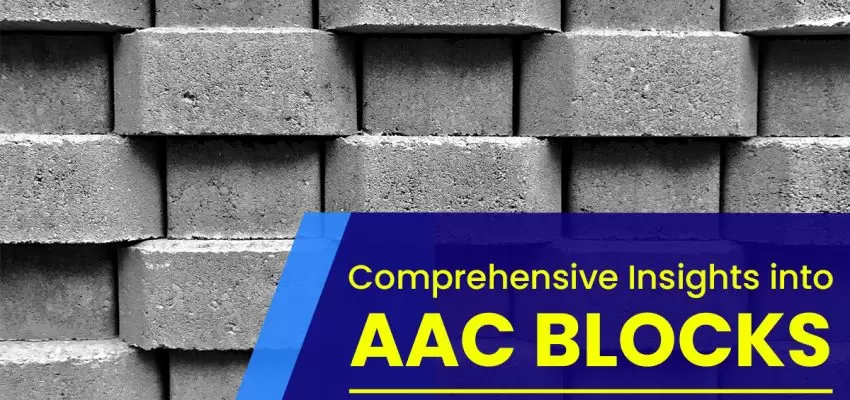
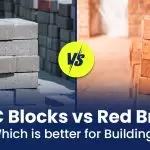
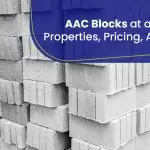
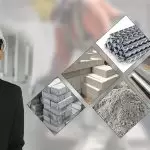
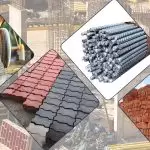

















Post A Comment